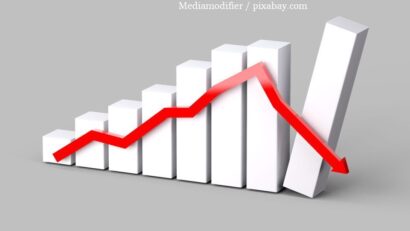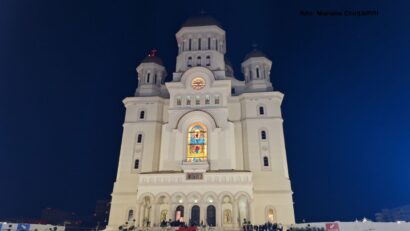Projects for Carbon Reduction
In the last 30 years, a number of fossil fuel exploitation units, along with electricity and thermal production units, have been shut down in Romania

Corina Cristea, 12.11.2021, 19:42
In the last 30 years, a number of fossil fuel exploitation units, along with electricity and thermal production units, have been shut down in Romania. The main reasons are a general drop in economic activity, low profitability, and lack of compliance with recent environmental norms. The energy strategy of Romania, a country with a considerable portion of its energy production coming from renewable sources, up to 40%, aims to bolster its energy sector, in line with EU targets for 2030, as well as the European 2050 environmental pact. This growth means, among other things, building new production capacity based on non-polluting technology of the latest design. In October, minister of the energy sector Virgil Popescu said that Energy stability and carbon reduction without nuclear energy is impossible. Which is why Romania, alongside its American, Canadian, and French partners will enhance its nuclear electric capacity in Cernavoda, with closer attention to SMR technology.
SMR means Small Modular Reactor technology, which Romania will include in its national energy grid in 2028, aiming to participate in the advanced production of such reactors in the region, training personnel and supporting this technology in other countries as well, according to the presidential administration in Bucharest. An agreement to this end has been signed with the US, which sees in SMR a low carbon solution, an opinion shared by Romania. The EU so far has not listed SMR as a clean technology, refraining from financing it. Speaking on Radio Romania, Professor Ionut Purica, a nuclear energy expert, spoke about the advantages of this type of reactor:
“You can pool together such small reactors in order to cover the demand for energy, starting them one by one or shutting them down one by one, in order to feed selectively the demand on the energy grid. Secondly, small modular reactors can be built top to bottom in industrial units and brought to the site where they are needed, and can be put to use faster. Thirdly, fuel from SMRs needs not be removed as spent fuel, the reactor can be taken back and refilled with fresh fuel, and be put back in position. This is very good both from a security viewpoint, as well as a nuclear anti-terrorism one.”
Right now there are many SMR projects, but it has to be understood that the US have been doing this since the 1960s, sending them to remote bases, including Antarctica, to provide electricity and heating, the professor continued. Right now, Russia is transporting such reactors to Siberia, for instance, for providing electricity there, with a capacity to feed an entire city for five years without interruptions. Environmentalists in Bucharest say that the authorities should give more attention to green energy sources with proven practical applications. The question remains regarding energy decentralization. Other questions are related to encouraging people to install solar panels, wind turbines, and heat pumps where they can, and to developing other green forms of energy production. These are questions that environment activists are aiming at the authorities, reminding them that Romania has a major source of hydroelectric energy, which could be better put to use. According to Mircea Dutu, chairman of the Ecological University, nuclear energy could be useful for the transition within well described legal limits, but would not be a solution for sustainable development, as well as being liable to hinder the renewable energy sector.
“This moment of energy crisis created by climate transition is being speculated once again by the nuclear industry, which is attempting a relaunch. Let us recall that in the 1960s, the electric power crisis and the great blackouts such as the one in New York in November 1965 were a pretext to get the population to accept the development of nuclear energy, within limits. In the 1970s there was the oil crisis, the spectrum of oil and coal running out, and now we have the same prospects of a crisis against the need to give up fossil fuels. As a result, nuclear energy is being proposed as a viable solution. The truth is somewhere in the middle. Geopolitically, nuclear energy is struggling to be listed as clean energy. However, the risk of nuclear accidents is still with us, and is increasing. I say that because the history of major accidents shows that they were a result of human error. As a result, as we have more and more of these devices, operated by various teams of people, the risk of accidents increases. The fact that they have lower power does not mean a lower catastrophic effect locally and nationally.”
A poll run by YouGov in October shows that 66% of Romanians do not want a nuclear power plant being built in their vicinity, while popular support for green energy is very high.






























